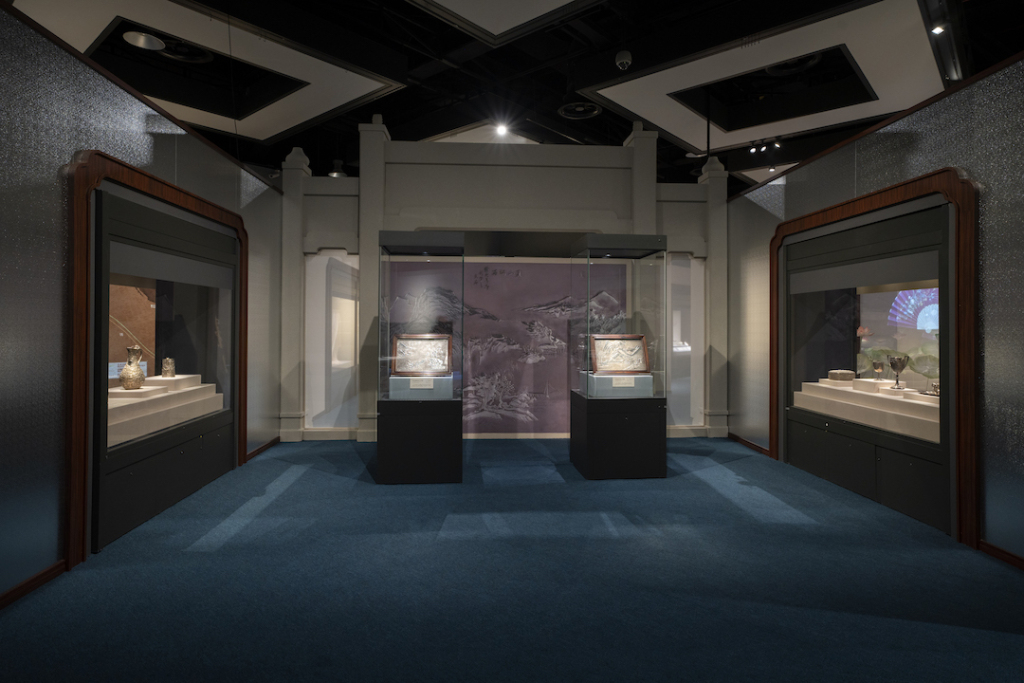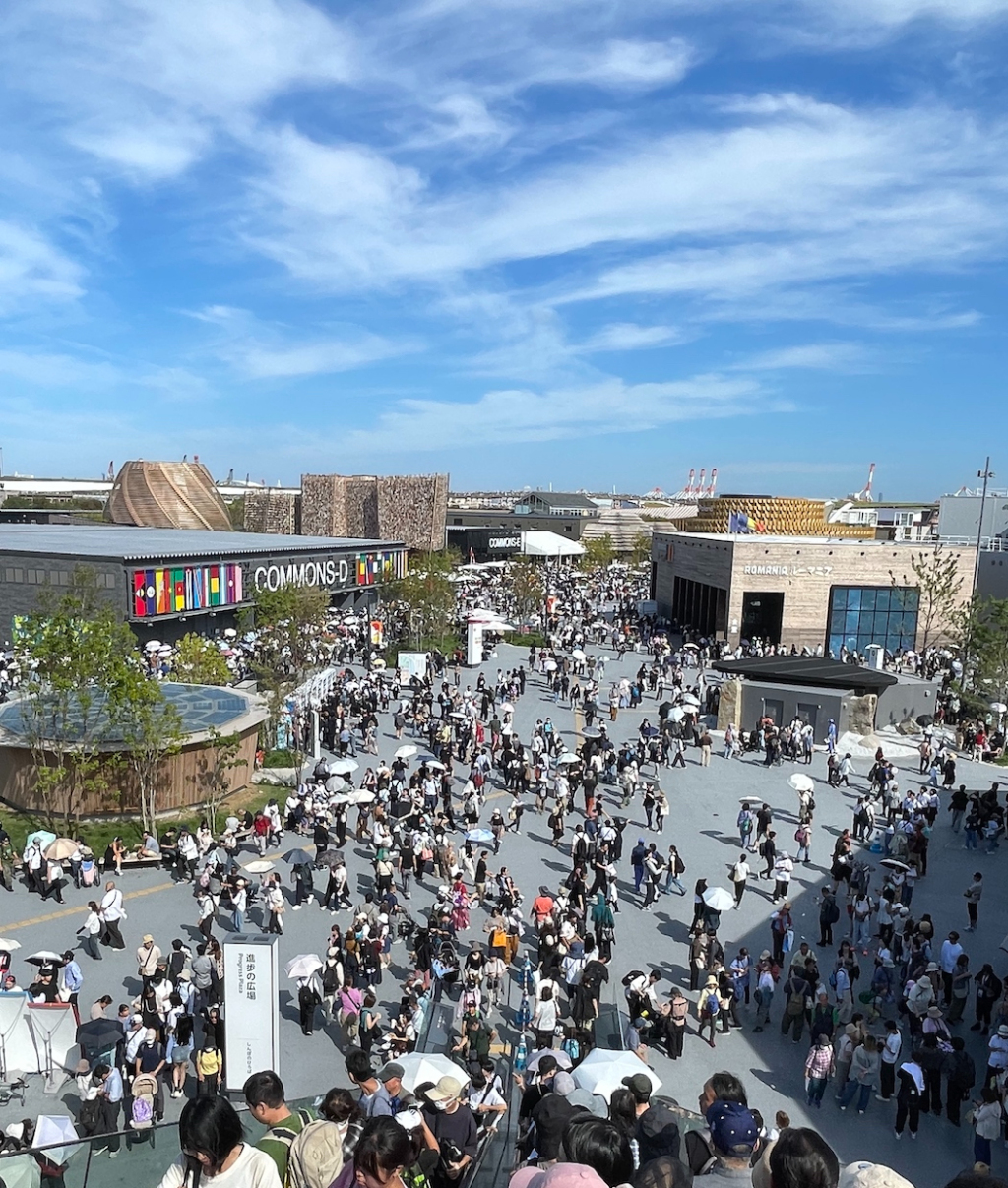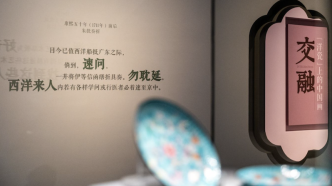
On April 30, the "Foreign Porcelain and Huacai - Special Exhibition of Cantonese Enamels from the Art Museum of the Chinese University of Hong Kong" jointly launched by the World Expo Museum and the Art Museum of the Chinese University of Hong Kong opened at the World Expo Museum located on the bank of the Huangpu River in Shanghai, with 136 items on display. Pieces/sets of wide enamel, the same utensil, but different names (foreign porcelain and Huacai) bear witness to the exchanges and dialogues between different civilizations.

"Foreign Porcelain and Huacai - Special Exhibition of Cantonese Enamels from the Art Museum of the Chinese University of Hong Kong"
As an art form introduced to China from the West in the late 17th century, Cantonese enamel plays an important role in the history of cultural exchanges between China and the West. The process of integrating China and the West reproduces the trade and cultural exchanges between China and the world at that time. Through the special medium of Guangzhou enamel, the exhibition shows the audience the complex process of the spread of culture from the West to the East, and then the feedback from the East to the West. The narrative structure from "interaction" to "integration" and then to "exchange" not only presents the process of cultural integration, but also reflects the two-way flow of cultural influence. This historical trajectory of two-way exchanges provides a more comprehensive and objective perspective for understanding the integration of Chinese and Western cultures.
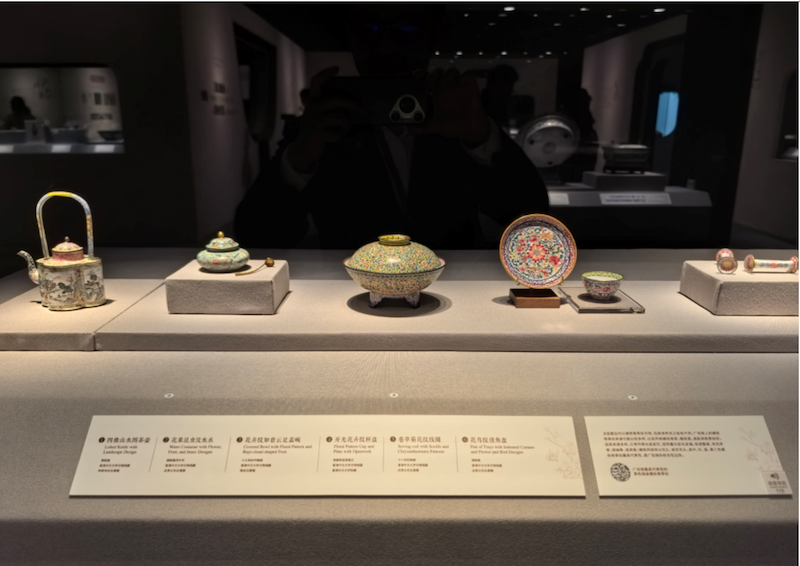
"Foreign Porcelain and Huacai - Special Exhibition of Cantonese Enamels from the Art Museum of the Chinese University of Hong Kong"
"Foreign porcelain" originated from the West, and after being re-created by integrating Chinese craftsmanship, it is regarded by Westerners as "brilliant" with Chinese characteristics. The same artifact, with two different names, witnesses the exchanges and dialogues between different civilizations and confirms the concept that "the vitality of civilization lies in exchanges, exchanges and integration."
Liu Wentao, director of the World Expo Museum, said in an interview with reporters: "The World Expo Museum itself has the mission of promoting international exchanges, which can be said to be genetically determined. The integration of Chinese and Western elements has always been a special exhibition direction of ours. This time we are fortunate to cooperate with the Art Museum of the Chinese University of Hong Kong Through cooperation, we will continue to conduct in-depth research and presentation on the concept of cultural exchange using the special carrier of Guang Enamel, and deepen the audience’s understanding of the diversity and possibilities of cultural exchange.”
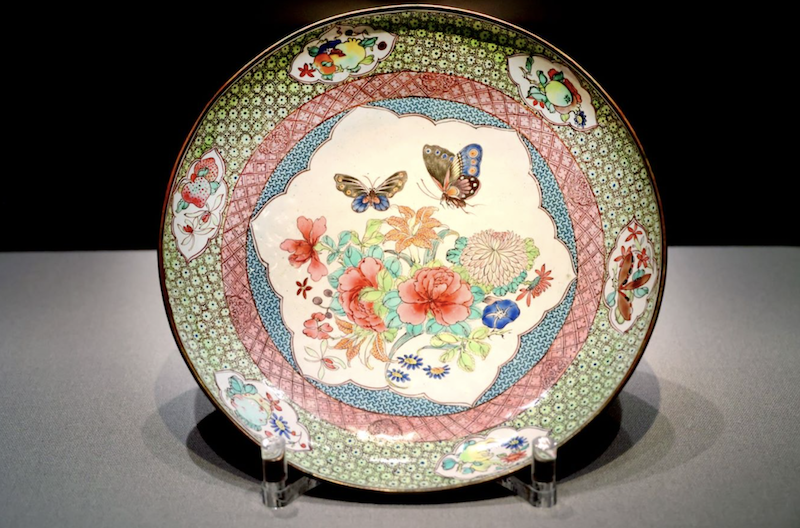
"Foreign Porcelain and Huacai - Special Exhibition of Cantonese Enamels from the Art Museum of the Chinese University of Hong Kong"
In-depth exploration of enamel craftsmanship and cultural connotations
As the product of the fusion of two civilizations, Guang enamel shows unparalleled artistic charm with its exquisite craftsmanship, delicate and clear color and texture. On display in this exhibition is the copper body painting enamel produced in Guangdong in the Qing Dynasty, represented by the Kangxi, Yongzong and Qianlong dynasties. Cantonese enamel includes many craft types such as painted enamel, transparent enamel, filigree enamel, and chiseled enamel. At present, only the painted enamel has been handed down, and the rest have been lost.
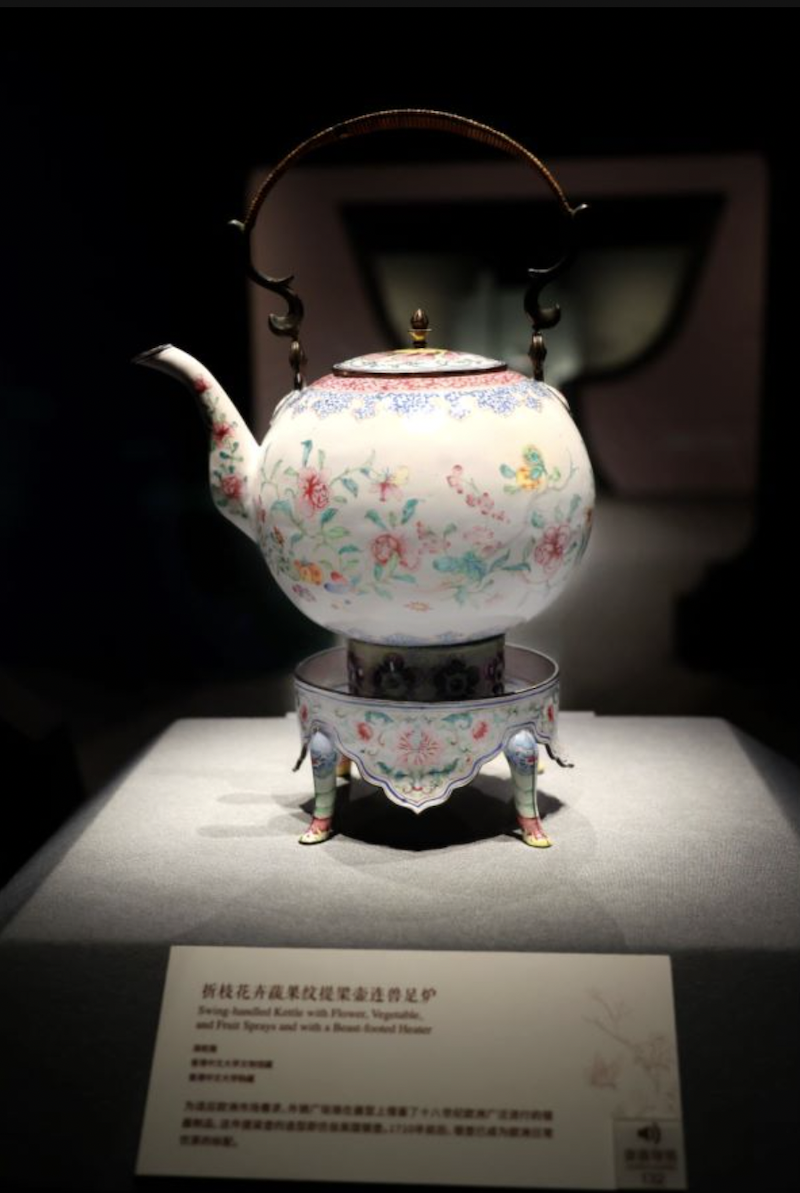
"Foreign Porcelain and Huacai - Special Exhibition of Cantonese Enamels from the Art Museum of the Chinese University of Hong Kong"
Each enamel object is a story teller. The exhibition explores the fine patterns and decorations on the surface of the objects, and tells the rich historical background and stories behind them from every detail and every stroke, revealing to the audience It opened the prelude to cultural exchanges between China and the West.
From the fine craftsmanship and patterns on the surface of enamel objects to the rich historical background and stories behind them, in this "small but beautiful" and "small but deep" exhibition, the audience can explore the historical traces of Sino-Western exchanges while immersing themselves in The colorful world of palace life, folk life, myths, legends and traditional customs conveyed by the exhibits.
Create an art exhibition that integrates into life
The exhibition has designed different theme colors for each unit, and the exhibits are integrated into the specific color background to form beautiful pictures that please the senses and touch the soul.
The exhibition is divided into three units. The first unit is "Communication" - "porcelain" from the West. With the opening of the sea in the 23rd year of Kangxi (1684), Guangzhou, as the forefront of China's opening up to the outside world, became an important hub for cultural exchanges between China and the West. Under this historical background, Western enamel painting technology was introduced to China and developed rapidly in Guangdong.

"Foreign Porcelain and Huacai - Special Exhibition of Cantonese Enamels from the Art Museum of the Chinese University of Hong Kong"
The art of firing painted enamel in Guangdong can be traced back to the 55th year of Emperor Kangxi of the Qing Dynasty (1716). Through paintings and background explanations, this unit takes the audience back to the Guangzhou port after Kangxi opened the sea, and feels the historical atmosphere of contact and exchange between Chinese and Western cultures in that era. Through a series of exhibits depicting Western characters with peculiar shapes that resemble both China and the West, we are shown the impact of Western culture on China and the exchange and integration of Chinese and Western cultures at the technical level.
Through this unit, the audience can experience the situation of China's foreign exchanges during the Kangxi period, as well as the learning and mastery of Western techniques by Chinese craftsmen.

"Foreign Porcelain and Huacai - Special Exhibition of Cantonese Enamels from the Art Museum of the Chinese University of Hong Kong"
The second unit, "Integration" - Chinese paintings on "foreign porcelain", focuses on the development of Guangzhou enamel and the formation of Guangcai. Some craftsmen combined Western painting and enamel craftsmanship with the essence of Chinese painting to create unique works of art. Traditional themes of Chinese paintings such as flowers and birds, landscapes, and figures are reproduced on the copper tire. The hard copper tire and the delicate brushstrokes and layers of Chinese painting form a unique Chinese style.
In this unit, the audience can see the traces of the integration of Cantonese enamel and traditional Chinese culture, especially the application of Chinese painting techniques in enamel craftsmanship, and the resulting artistic style with Chinese characteristics. Works such as "Plate with Flowers and Birds" and "Vase with Figures in the Opening Courtyard" incorporate elements such as Chinese flowers, landscapes, and figure paintings, showing the perfect combination of Chinese and Western artistic styles. They are how Chinese and Western civilizations achieve artistic fusion on Cantonese enamel. and innovation.

"Foreign Porcelain and Huacai - Special Exhibition of Cantonese Enamels from the Art Museum of the Chinese University of Hong Kong"

"Foreign Porcelain and Huacai - Special Exhibition of Cantonese Enamels from the Art Museum of the Chinese University of Hong Kong"
This unit also demonstrates the profound influence of Guang enamel on Chinese porcelain art, as well as the history of exchanges between Guangdong and the court. The use of winding branches and curly grass patterns reflects the close connection between Guangdong enamel and Yuan and Ming porcelain. In the 18th century, many Cantonese enamel craftsmen participated in the production of court painting enamel, and their skills and styles had a certain impact on court art.
The innovation of transparent enamel is Guangzhou's major contribution to enamel technology, especially the production technology of hard transparent enamel. Although it has been lost now, its former glory is still amazing. The birth of Guangcai porcelain marked the further spread of Guangcai's artistic influence. It not only drew on Guangcai's technology, but also created a unique artistic style and achieved great success in the international market.

"Foreign Porcelain and Huacai - Special Exhibition of Cantonese Enamels from the Art Museum of the Chinese University of Hong Kong"
The exhibition in this unit is not only a concentrated display of Cantonese enamel art. Its artistry and innovation have contributed to the aesthetic value of today's Cantonese enamel art. It is also an in-depth interpretation of the integration process of traditional Chinese art and Western techniques. Through these exquisite exhibits, the audience can deeply appreciate the beauty of cultural integration and the power of artistic innovation.
The third unit "Exchange" - "Huacai" from China, tells the impact of Guangcai on the world after it returned to the West. As an outstanding representative of the arts and crafts of the Qing Dynasty, the production and circulation of Guang enamel not only strictly followed the palace regulations and reflected the profound traditional Chinese cultural heritage, but also actively adapted to overseas markets and became a bridge for cultural exchanges between China and the West.

"Foreign Porcelain and Huacai - Special Exhibition of Cantonese Enamels from the Art Museum of the Chinese University of Hong Kong"
The Cantonese enamels that were sent to the court as tribute reflected the high standards of royal aesthetics and craftsmanship with their fine craftsmanship and dignified style; the designs of the Cantonese enamels that were exported to the European market integrated Western usage habits and traditional Chinese aesthetics, becoming a 18th century An important carrier of the popularity of "Chinese style" in the 20th century, it had an important impact on European artistic aesthetics. Works such as "Broken Branches, Flowers, Vegetables and Fruit Patterns, Lift Lift Pot and Animal Foot Stove" tell the story of how the sinicized Cantonese enamel returned to the Western market and influenced other regions.
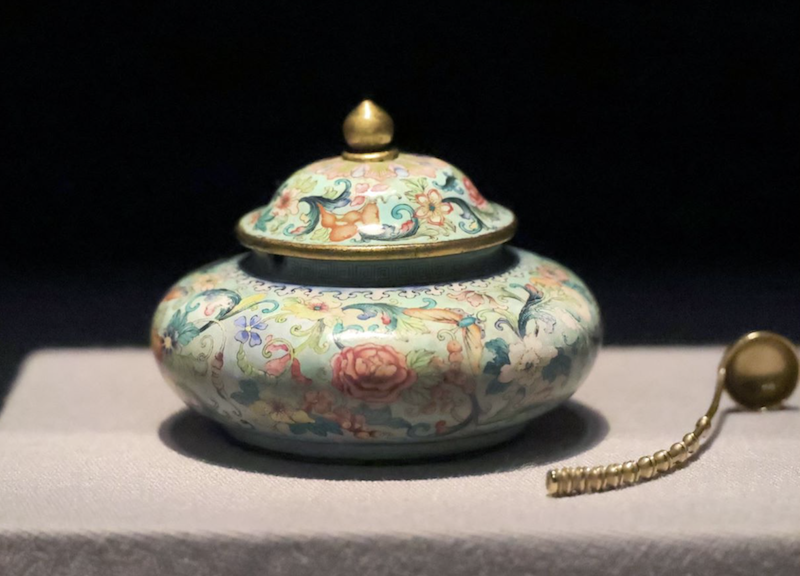
"Foreign Porcelain and Huacai - Special Exhibition of Cantonese Enamels from the Art Museum of the Chinese University of Hong Kong"
With the passage of time, the production of Cantonese enamel gradually moved from the palace to the private sector, and craftsmen and merchants began to create their own brands, which promoted the innovation and spread of Cantonese enamel art, making it an important part of China's foreign cultural exchanges. Through the carefully planned exhibition layout and rich exhibits, the audience can have a deeper understanding that cultural integration is not a one-way communication, but a two-way interaction and mutual influence process. This understanding helps promote cross-cultural understanding and respect and the innovation and development of civilization.
Appreciation of some exhibits
A tall bowl with a Western pattern of women and children with clouds and dragons, Yongzheng or early Qianlong period of the Qing Dynasty

A tall bowl with a Western pattern of women and children with clouds and dragons, Yongzheng or early Qianlong period of the Qing Dynasty
The center of the bowl is painted with a picture of a Western woman and child, and the outer wall of the bowl is painted with carmine red glaze. The origins of carmine can be traced back to Europe in the 16th century, but the color application method of Guang enamel adopts the Jingdezhen porcelain glaze blowing process, reflecting an Eastern interpretation of European colors. If you look closely at the glaze, you will see countless tiny particles evenly distributed on it.
Flower and bird pattern plate, Qianlong or Jiaqing period, Qing Dynasty

Flower and bird pattern plate, Qianlong or Jiaqing period, Qing Dynasty
The painting of flowers and birds best reflects the skill of the craftsman. The center of this plate is painted with camellia and golden pheasants, and the depiction of dead leaves is particularly vivid. The rim of the mouth is painted with hollyhocks, peonies, chrysanthemums and foreign flowers. The bottom of the plate is centered on foreign flowers, and the outer walls are decorated with peonies, roses, hollyhocks, beetles, grasshoppers and butterflies.
Bitong Cup, Qianlong or Jiaqing, Qing Dynasty

Bitong Cup, Qianlong or Jiaqing, Qing Dynasty
The blue tube cup is regarded as the most elegant drinking utensil by literati. Its flower stem is hollow inside and goes straight to the bottom for absorbing water. Bitong cups are often imitated in the shape of lotus leaves. This cup turns the lotus leaves into peonies, which is unique. Su Shi has a poem that goes: "When the blue tube is bent, the trunk is bent, and the white wine is slightly bitter."
Foreign Porcelain and Huacai - Special Exhibition of Cantonese Enamels from the Art Museum of the Chinese University of Hong Kong
Location: World Expo Museum (Shanghai)
Exhibition period: April 30-July 21, 2024
